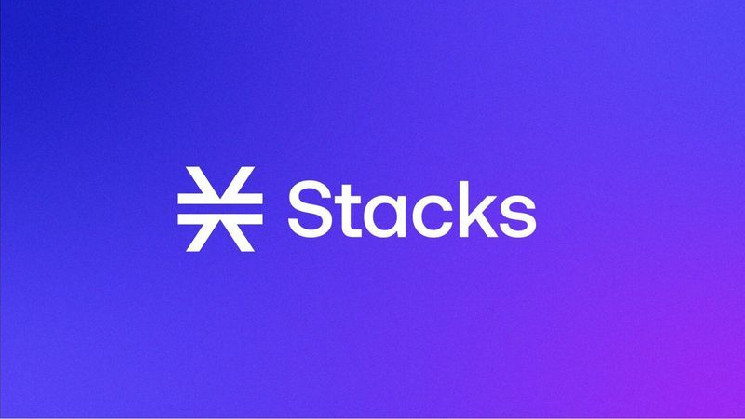What is Stacks? An Introduction to the Popular Bitcoin Layer-2 Protocol

Stacks has been making waves since the start of the year as Bitcoin Ordinals brought attention to Bitcoin NFTs, which already exist on the Stacks blockchain as layer-2 NFTs, thus creating a surge in demand for STX and increasing trading volumes among Stacks-based NFTs.
In this guide, we look at the Stacks blockchain, how it works, how it differs from other chains, and what types of decentralized applications (DApps) you can find in the Stacks ecosystem.
What is Stacks?
Stacks is a Bitcoin layer-2 blockchain protocol that is improving the functionality of Bitcoin through self-executing smart contracts without the need for a Bitcoin fork.
This means that Stacks can bring new functionalities to Bitcoin, like decentralized applications and smart contract functionality, without changing any of Bitcoin’s features. It uses the Proof-of-Transfer (PoX) consensus mechanism, which we’ll cover more in this guide.
Before its rebranding to Stacks in 2020, Stacks was known as Blockstack and was co-founded by two Princeton alumni — Muneeb Ali and Ryan Shea — in 2017. Its development began after the company secured $50 million via a token offering. The company spent 2018 developing its mainnet, and in 2019, Blockstack had its public sale becoming the first-ever US Securities and Exchange Commission (SEC) controlled token sale.
In the same year, STX was listed by multiple leading crypto asset exchanges. Today, Stacks has established itself as a popular Layer-2 protocol for Bitcoin, with a small but growing ecosystem of Bitcoin builders looking to create Web3 applications secured by the Bitcoin network.
What is STX?
The Stacks blockchain has its own native digital token, known as Stacks (STX), which powers the Stacks ecosystem.
STX is used to execute Bitcoin smart contracts that utilize the Clarity programming language, process transactions, reward miners on the Stacks network, and enable its holders to earn BTC via a process known as stacking.
At the time of writing, STX has has a total market capitalization of over $1.5 billion and the token’s price is hovering around the $1.15 mark.
Proof-of-Transfer Explained
Crypto networks use a consensus mechanism to secure the blockchain. Two of the most commonly used consensus mechanism are Proof-of-Work (PoW) and Proof-of-Stake (PoS).
In PoW, miners have to solve a mathematical puzzle to validate a transaction, while in PoS, the blockchain relies on stakers to verify crypto transactions. With both mechanisms, miners and stakers earn rewards in exchange for validating transactions.
Proof-of-Burn (PoB) is another infrequently used consensus mechanism. In PoB, miners compete to ‘burn’ a PoW token as a substitute for computing resources.
Stacks’ consensus mechanism — PoX (Proof of Transfer) — is an extension of PoB. How? The PoX mechanism relies on a PoW digital currency of an already-established blockchain (Bitcoin) to secure a new blockchain. However, contrary to the Proof-of-Burn mechanism, miners must transfer the pledged digital tokens to selected participants within the network instead of burning the tokens. Also, because all Stacks’ transactions are settled on Bitcoin, users can enjoy Bitcoin’s security.
Miners within the Stacks ecosystem transfer Bitcoin that’s used to give Stacking rewards paid in BTC to token holders as a reward for helping to secure the network. To achieve this, Stackers have to lock up their STX tokens for a specific period of time and provide their BTC address to receive their rewards. Stackers get to unlock their STX holdings once the cycles they committed to come to an end.
The Proof-of-Transfer mechanism has several benefits for blockchains like Stacks.
- Stacks leverages Bitcoin’s security.
- Apps that have been developed on Stacks can easily interact with Bitcoin’s on-chain state and data.
- No special hardware is needed to participate in PoX. Thus, anyone can become a miner. In addition, they also get to reuse the energy that Bitcoin had already expended via its Proof-of-Work consensus mechanism.
- Stackers get to earn BTC for securing the network.
What is Stacking Stacks & How Does It Work?
Stacking stacks is a progressive mechanism that rewards STX token holders for participating in Stacks’ Proof-of-Transfer consensus mechanism. STX holders who engage in stacking are known as Stackers.
Each time a new block gets mined on the Stacks blockchain, the platform sends the committed BTC by miners to Stackers as a reward for securing the network. All Stackers get awarded Bitcoin after roughly every stacking cycle. However, the stacking cycles aren’t constant and vary based on various factors.
To participate in Stacking, Stackers need to have a Stacks wallet whose version is 4 or higher. Additionally, they can also use various applications and services offered by other entities. STX holders also need a minimum amount of STX to take part in stacking directly. The amount is approximately 100,000 STX, which varies based on the overall supply and participation.
Any STX holder keen on participating and doesn’t hold the minimum STX needed can join a stacking pool.
What Can You Find in the Stacks Ecosystem?
The Stacks layer-2 protocol has multiple benefits for developers as it can unlock non-fungible tokens (NFTs), decentralized finance (DeFi), and other web3 applications. Let’s look at what you can find on Stacks.
NFTs
Non-fungible tokens (NFTs) are unique cryptographic tokens representing an asset or an item. NFTs are built on the Stacks blockchain using the Clarity programming language and then settled and secured using Bitcoin. Users can then send, receive, and store their NFTs using a non-custodial Stacks wallet like Hiro or Xverse.
DeFi
The Bitcoin decentralized finance sector remains a largely untapped market despite the increased adoption of Bitcoin.
Stacks has been built to enhance DeFi for Bitcoin as it can leverage Bitcoin’s settlement and security assurances. The ability for smart contracts to be executed on Bitcoin is also a functionality that’s been made possible through the Stacks blockchain. Additionally, all transactions on Stacks settle on Bitcoin via the PoX consensus mechanism.
Games
Like most blockchains, Stacks users can access various games on the Stacks network. The best part is that users can enjoy various games without revealing identifying information. Additionally, as a gamer, you can potentially earn rewards in STX.
Is the Stacks (STX) Token a Good Investment?
Whether STX is a good investment depends on your risk tolerance and investment strategy. If you are comfortable taking a lot of risk and want to invest in a Bitcoin layer-2 token, STX may be right for you.
However, it’s important to note that Stacks has its own blockchain and ecosystem. So, if Bitcoin succeeds, it doesn’t necessarily mean Stacks will also experience similar success.
Before deciding to invest or not invest in Stacks, you must research STX to ensure you fully understand what you are investing in. Moreover, all crypto investing carries risk, and you should never invest more than you can afford to lose.







 Bitcoin
Bitcoin  Ethereum
Ethereum  Tether
Tether  Dogecoin
Dogecoin  USDC
USDC  Cardano
Cardano  TRON
TRON  Bitcoin Cash
Bitcoin Cash  Chainlink
Chainlink  LEO Token
LEO Token  Litecoin
Litecoin  Cronos
Cronos  Stellar
Stellar  Ethereum Classic
Ethereum Classic  Dai
Dai  Stacks
Stacks  Monero
Monero  OKB
OKB  Hedera
Hedera  Cosmos Hub
Cosmos Hub  Algorand
Algorand  Theta Network
Theta Network  Maker
Maker  KuCoin
KuCoin  Gate
Gate  EOS
EOS  Polygon
Polygon  NEO
NEO  Tezos
Tezos  Tether Gold
Tether Gold  Zcash
Zcash  Bitcoin Gold
Bitcoin Gold  IOTA
IOTA  TrueUSD
TrueUSD  Synthetix Network
Synthetix Network  Holo
Holo  Zilliqa
Zilliqa  Dash
Dash  0x Protocol
0x Protocol  Qtum
Qtum  Siacoin
Siacoin  Ravencoin
Ravencoin  Basic Attention
Basic Attention  Enjin Coin
Enjin Coin  Decred
Decred  Ontology
Ontology  NEM
NEM  Lisk
Lisk  Status
Status  DigiByte
DigiByte  Waves
Waves  Nano
Nano  Pax Dollar
Pax Dollar  Numeraire
Numeraire  Hive
Hive  Steem
Steem  Huobi
Huobi  BUSD
BUSD  Ren
Ren  OMG Network
OMG Network  Bitcoin Diamond
Bitcoin Diamond  Bytom
Bytom  Kyber Network Crystal Legacy
Kyber Network Crystal Legacy